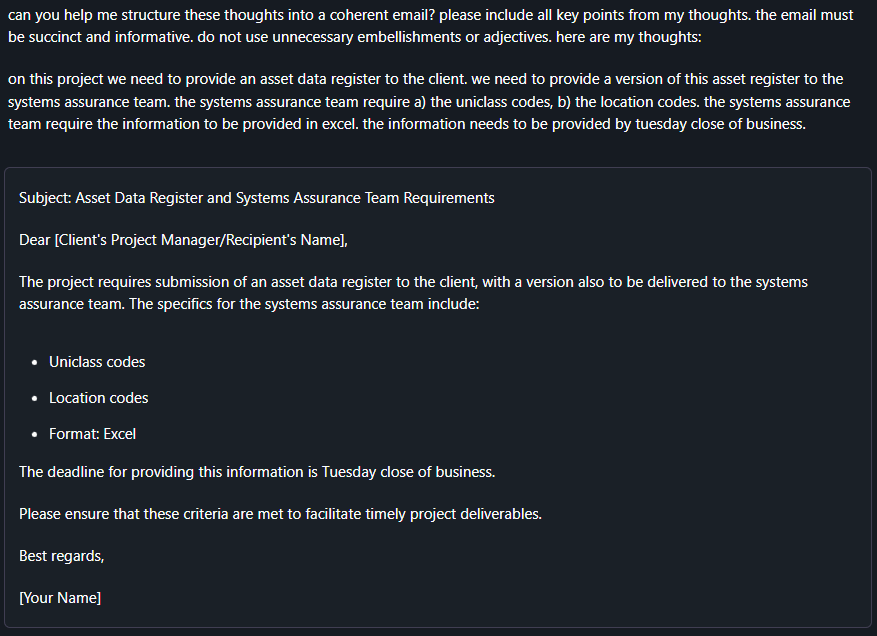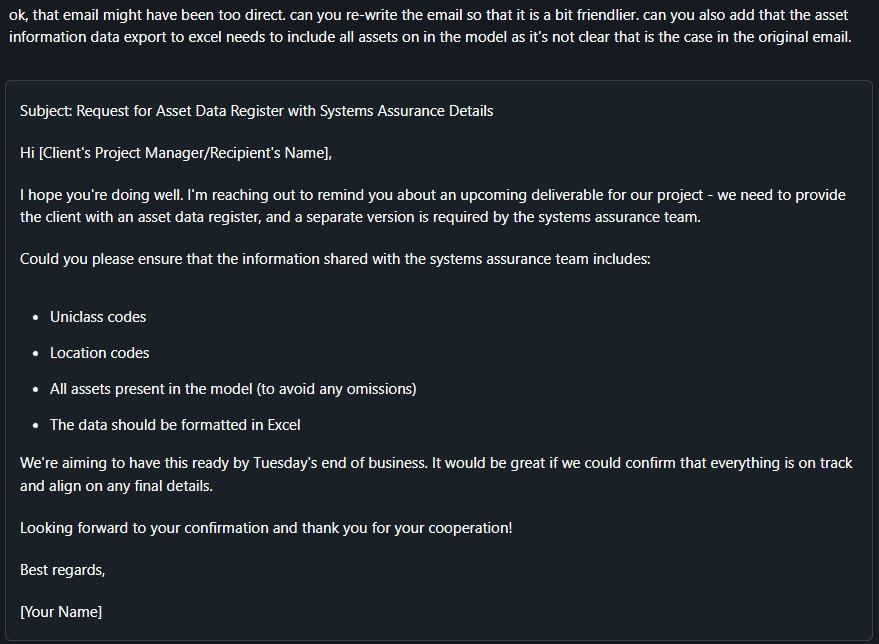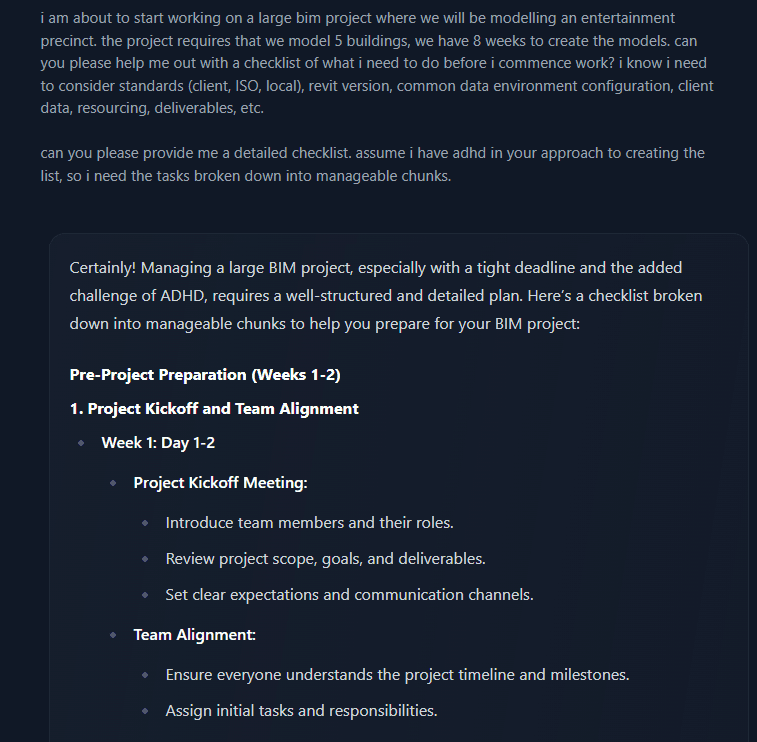In the AEC industry, staying ahead relies on efficient communication, planning, and the ability to turn complex, fragmented information into actionable insights. One practical way AI is helping with this is through Large Language Models (LLMs), like GPT. Think of these models as a “calculator for words” that helps you structure thoughts, write better, and communicate more clearly.
Organising Ideas and Data into Coherent Narratives
One of the most powerful ways LLMs can assist is by helping you structure unorganised or unstructured data. Whether it’s feedback from a project meeting, responses from a client, or the early stages of design brainstorming, AI models can quickly summarise, organise, and turn scattered thoughts into a cohesive plan. This is incredibly helpful when managing complex workflows and projects, where different teams contribute various pieces of information.
For example, in a recent project, we had a flood of feedback from multiple stakeholders, including architects, engineers, and contractors. Using GPT, we were able to summarize and categorize this feedback, identifying key themes and actionable items and building a narrative that was easier to understand and share, reducing the risk of miscommunication and project delays.
Enhancing Communication and Collaboration
In industries like AEC, where multiple stakeholders must collaborate efficiently, communication is key. LLMs assist in improving this by helping professionals rewrite emails, reports, and proposals with clarity and professionalism. AI can quickly adjust the tone, structure, and phrasing of your communications, ensuring that you present information in a way that reduces misunderstandings and aligns with the formal requirements of the project.


For instance, crafting a diplomatic email to address a delay in project delivery can be challenging. Using an LLM, you can generate an empathetic yet clear message that explains the situation without sounding overly negative. This not only saves time but also helps maintain professional relationships and project momentum.
AI for Task and Project Planning
Beyond just organising thoughts, LLMs can be used to help plan out tasks and projects. With the right inputs, AI can generate checklists, outline project milestones, and assist in resource management planning. For example, if you’re kicking off a new BIM implementation across a large infrastructure project, GPT can assist by suggesting workflows, breaking down tasks, or even refining the documentation you need to share with stakeholders. This can streamline both the brainstorming and execution phases, allowing teams to stay aligned with project goals.
Extra Benefit for Neurodivergent Individuals
Something I had never thought of before is that LLMs can be particularly beneficial for those who are neurodivergent, such as individuals with ADHD. For example, when creating the example project plan below, I asked the language model to approach the creation of the checklist as if I had ADHD. The AI helped by breaking down tasks into smaller, manageable steps, providing clear and concise instructions, and ensuring that no important details were overlooked. This approach can significantly reduce the cognitive load and make the planning process more manageable.


By using LLMs, the planning process becomes more structured and less overwhelming, making it easier for everyone, especially those who benefit from clear, step-by-step guidance.
Sentiment Analysis
The final example today comes from a digital transformation workshop I hosted. By using an LLM to analyse sentiment, we were able to categorise and score the emotional tone of feedback. The AI highlighted key areas of concern and success, giving us clear insights into where improvements were needed. This use of AI not only saved time but also allowed for more targeted follow-up, improving team engagement and addressing issues head-on.
For example, during the workshop, we received a lot of feedback on process improvements and technology adoption. Using sentiment analysis, we quickly identified the most pressing concerns and areas of success. This helped us prioritise our actions and communicate more effectively with the team.

Best Practices for Using LLMs
While AI can help immensely, there are a few best practices to keep in mind:
- Provide specific instructions and context for better results. The more detailed the prompt, the more accurate the response.
- If you’re asking an LLM to rewrite or improve text, make sure you give enough background for it to understand the situation.
- AI-generated content should be reviewed and edited to ensure it aligns with your tone, goals, and style. It’s not perfect, but it’s a powerful tool to get you most of the way there.
Incorporating AI and LLMs into your workflow can revolutionise how you manage data, communicate, and plan. Whether you’re brainstorming, sorting through feedback, or fine-tuning the tone of your emails, AI is here to help structure your thoughts and guide you to better outcomes. Augmenting your workflows with AI, you can work faster, stay more organised, and achieve greater efficiency.






No Comments